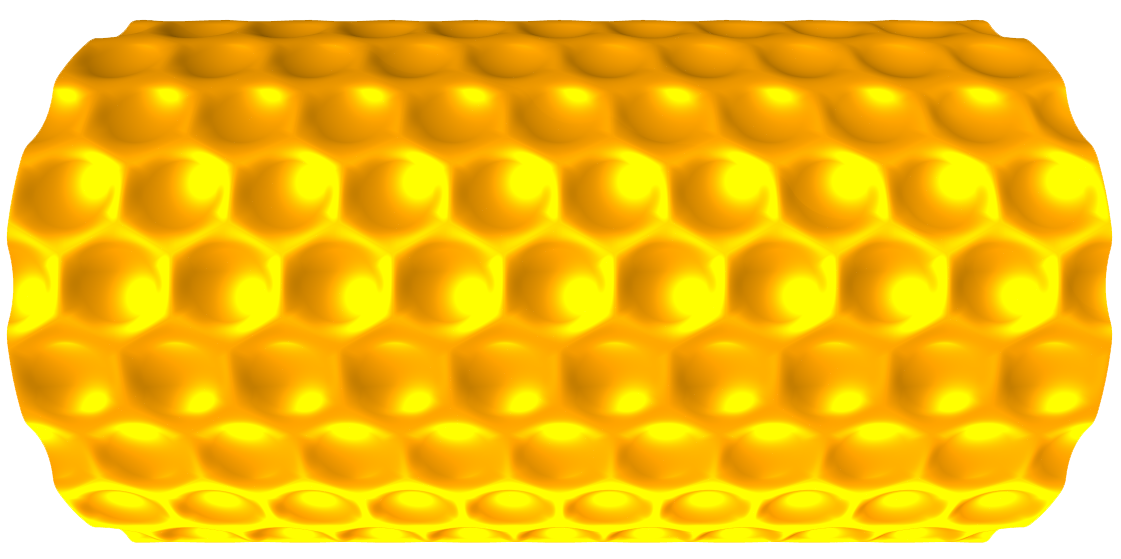Community Tip - Learn all about the Community Ranking System, a fun gamification element of the PTC Community. X
- Community
- Creo+ and Creo Parametric
- 3D Part & Assembly Design
- Re: Am I making a tessellated sphere correctly in ...
- Subscribe to RSS Feed
- Mark Topic as New
- Mark Topic as Read
- Float this Topic for Current User
- Bookmark
- Subscribe
- Mute
- Printer Friendly Page
Am I making a tessellated sphere correctly in Creo
- Mark as New
- Bookmark
- Subscribe
- Mute
- Subscribe to RSS Feed
- Permalink
- Notify Moderator
Am I making a tessellated sphere correctly in Creo
I need to make a model of a sphere with a sensor screwed into every vertex of a tessilated sphere. My plan at the moment is to calculate those vertices in an external program, import the points into creo, then use the patern tool selecting each datum point. Is there an easier way to do this?
This thread is inactive and closed by the PTC Community Management Team. If you would like to provide a reply and re-open this thread, please notify the moderator and reference the thread. You may also use "Start a topic" button to ask a new question. Please be sure to include what version of the PTC product you are using so another community member knowledgeable about your version may be able to assist.
- Mark as New
- Bookmark
- Subscribe
- Mute
- Subscribe to RSS Feed
- Permalink
- Notify Moderator
That's how I'd do it.
You could do it entirely in Creo, but it wouldn't be easier or faster. The advantage would be that you could easily change the number of facets afterwards but you have to weigh up if the initial time investment would pay off for the number of times you're likely to change it.
- Mark as New
- Bookmark
- Subscribe
- Mute
- Subscribe to RSS Feed
- Permalink
- Notify Moderator
- Mark as New
- Bookmark
- Subscribe
- Mute
- Subscribe to RSS Feed
- Permalink
- Notify Moderator
There so many sensors for this to work. ![]()
- Mark as New
- Bookmark
- Subscribe
- Mute
- Subscribe to RSS Feed
- Permalink
- Notify Moderator
Antonius' information is probably a really good place to start.
But I have to ask how many sensors? 4 or 400, might change the thought process.
- Mark as New
- Bookmark
- Subscribe
- Mute
- Subscribe to RSS Feed
- Permalink
- Notify Moderator
40000
![]()
I don't think Antonius' method would work. Maybe this is something creo just can't do.
I have the points in creo, but when I pattern them, they point in the same direction as the first hole.
- Mark as New
- Bookmark
- Subscribe
- Mute
- Subscribe to RSS Feed
- Permalink
- Notify Moderator
Yeah, see, that is some key information right there. And how big is the sphere going to be?
- Mark as New
- Bookmark
- Subscribe
- Mute
- Subscribe to RSS Feed
- Permalink
- Notify Moderator
I maybe giving too much information on the product. Bigger then a workout ball, let's say. Fairly big.
- Mark as New
- Bookmark
- Subscribe
- Mute
- Subscribe to RSS Feed
- Permalink
- Notify Moderator
There is an option in the fill pattern that used the surface normals. Unfortunately, for a point pattern, points have this information built into them. I have had this issue before where we do not have good control of how the points are defined internally. I've had similar shortcomings with splines where you expected the normal to "twist" but didn't depending solely on how they were generated.
- Mark as New
- Bookmark
- Subscribe
- Mute
- Subscribe to RSS Feed
- Permalink
- Notify Moderator
Fill patterns, hmmm, let me look those up. I'll get back to you.
- Mark as New
- Bookmark
- Subscribe
- Mute
- Subscribe to RSS Feed
- Permalink
- Notify Moderator
What Antonius said. It sounds like the place to start is getting 40,000 points on the ball first.
- Mark as New
- Bookmark
- Subscribe
- Mute
- Subscribe to RSS Feed
- Permalink
- Notify Moderator
It works. I'll write up a guide because it isn't straight forward. But it works. Thanks guys!!! This is amazing.
- Mark as New
- Bookmark
- Subscribe
- Mute
- Subscribe to RSS Feed
- Permalink
- Notify Moderator
One of my favorite fill patterns:





